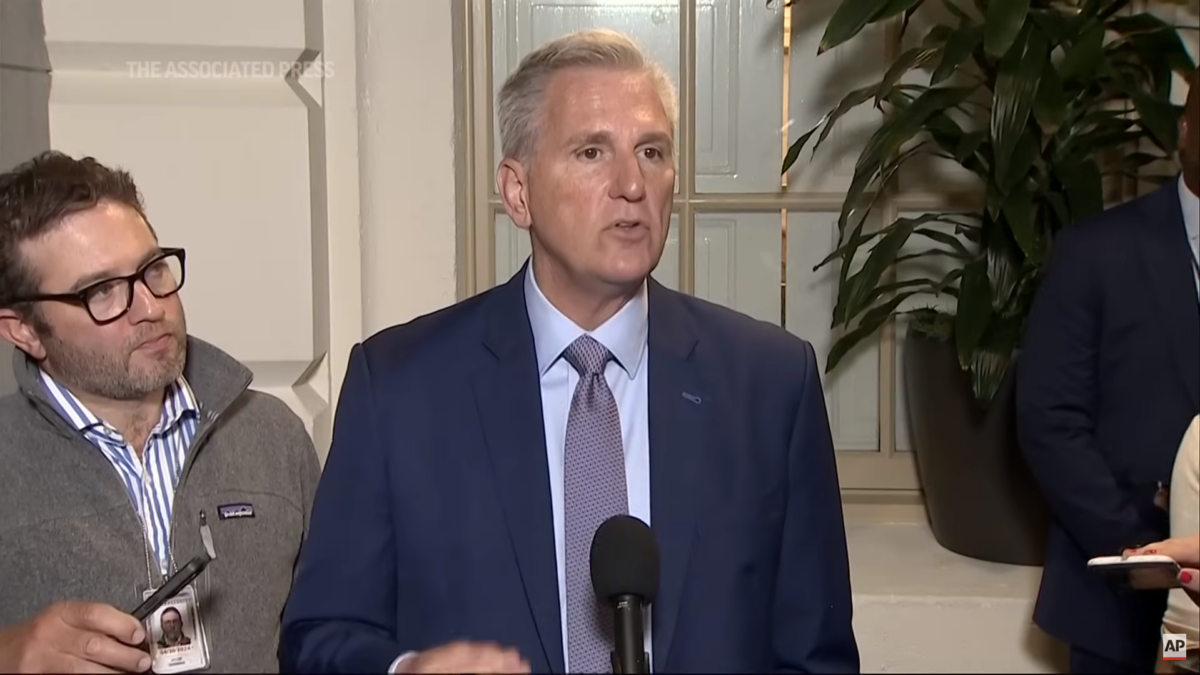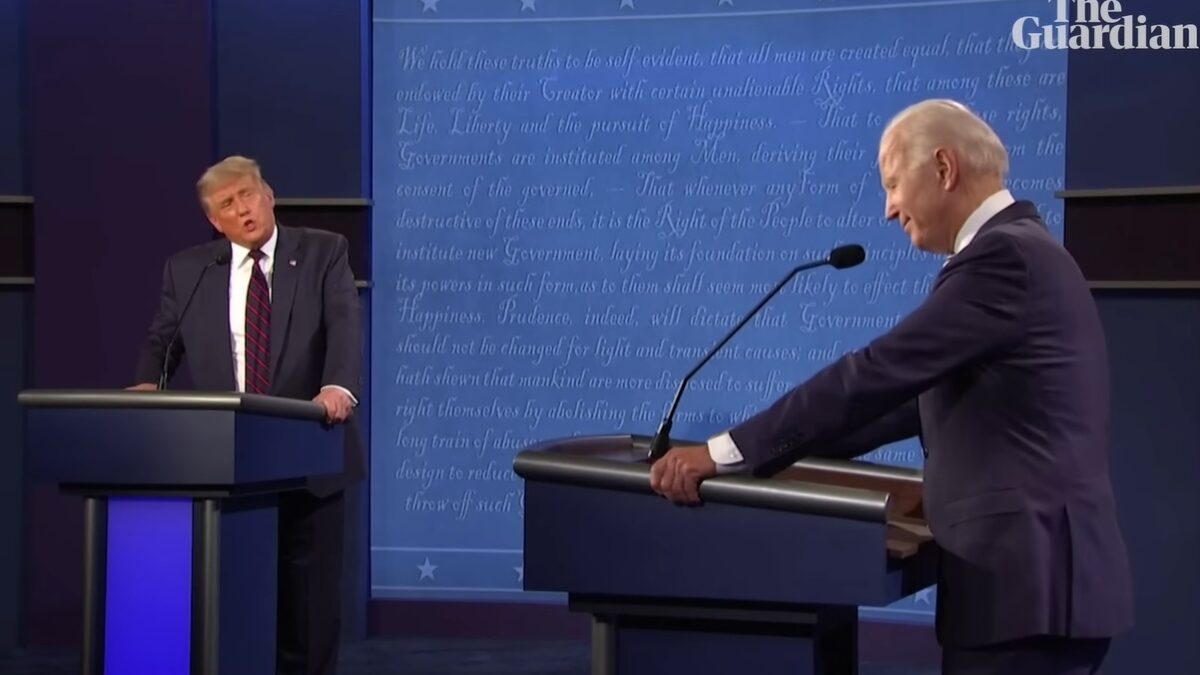
The problem of a government overcommitted to entitlement spending is one of the most predictable crises in American history. Neither of the two largest federal entitlement programs are on sound footing, according to their own trustees. The most recent report on Social Security predicts insolvency in just 16 years. For Medicare, researchers are predicting just eight more years of runway––three years earlier than previously forecast.
Going down to the state and local level, a May 2018 report by Harvard University’s Kennedy School revealed that public pension funding in New Jersey and Kentucky is already at “high risk of insolvency” and will shortly threaten the financial security of both current and retired government workers. The situations in California, Connecticut, Illinois, and Pennsylvania are not much better. According to a more recent estimate provided by Moody’s to the Wall Street Journal, the combined pension hole of all U.S. states and cities is now equal to the world’s fourth-largest economy, Germany.
In response, many towns across the country are already cutting back on teachers, police, and even firemen just to have room in their coffers to fund their predecessors’ post-retirement benefits. In California, where average municipal pension contributions have increased 69 percent in real dollars over the last decade, Sacramento already spends 17 percent of its general fund on retirement costs, while nearby Davis expects to spend 26 percent by 2025.
From Santa Fe, New Mexico, to Allentown, Pennsylvania, to Berkeley County, South Carolina, worried voters are demanding audits of municipal budgets in desperate hope of finding enough waste, fraud, or abuse to avoid both major tax increases and essential service cutbacks.
Governments Have Ignored the Problem
While the economic boost from recent Republican tax cuts will likely produce enough revenue to buy all levels of government some extra time, few experts believe growth alone can provide anywhere near what is needed to make good on most government promises. Despite recent legislation, the United States’ long-term fiscal outlook “is not good,” says Goldman Sachs chief economist Jan Hatzius.
He predicts annual federal deficits more than doubling within the decade to $2.05 trillion–7 percent of GDP–and warns that, without radical policy changes, the country’s very stability will be at risk when the next recession comes around. As for the states, Pew estimates that even if their pension portfolios were growing at an exceptionally healthy 6.5 percent a year, they would still end up $1.7 trillion short of their estimated obligations.
Neither political party can honestly claim ignorance of the coming fiscal upheaval. In the case of Social Security and Medicare, every annual fiduciary report to Congress since 1993 has warned of pending insolvency. “Everyone in Washington [has been] aware of the magnitude of the problem, the need for repair, and the danger that delay would make inevitable corrections more painful,” says Charles Blahous, a former public trustee for both programs. As for precariously funded state and local pensions, respected think tanks like the Mercatus Center at George Mason University and the Stanford University’s Institute for Economic Policy Research have joined the Kennedy School and Pew in warning what is to come.
But fearing that any effort to honestly address the widening gap between government promises and insufficient revenue would be demonized by their political opponents, most elected officials have hesitated to recommend specific solutions. Would it be better to print more money, raise taxes, cut promised retirement benefits, trim entitlement spending, create means tests for entitlement benefits, or some combination of each? Few politicians dare say. Instead, Democrats keep pretending that the fiscal crunch is not happening, while Republicans pretend that faster economic growth alone is the solution.
Indeed, the only thing most politicians seem willing to do is increase their inflammatory rhetoric on unrelated issues, perhaps imagining that this will confer a negotiating advantage on the day of fiscal reckoning. The illusion gripping on both sides of the aisle is that there exists some lopsided solution to the coming crisis, an adjustment that will take disproportionately from the “greedy rich” and “socially irresponsible corporations” (if you’re on the left) or from “lazy welfare cheats” and “overcompensated public employees” (if you’re on the right).
To Everyone’s Chagrin, Compromise Might Be Needed
The historical truth is that whenever a society can no longer borrow enough to cover the gap between promised expenditures and actual revenue–that is, when government can no longer tap the credit markets without paying a prohibitively high interest rate–every faction endures a painful share of the subsequent economic adjustment.
That’s not because it is fair, and certainly not because the population has suddenly been seized by newfound generosity, but because shared sacrifice is the only way to keep a verbal civil war from becoming a real one. As those now suffering through Puerto Rico’s recent default have already learned, the only peaceful way through a fiscal crisis is a begrudging accommodation by all parties.
At a recent conference on municipal finance, a paper by James Spiotto of Chapman Strategic Advisors articulated a disarmingly simple yet incontrovertible principle: No matter how difficult the problem of insupportable public debt, or how it came about, no workable solution can disproportionately punish a single constituency or jeopardize a “vital mission of government.” The challenge for every bankrupt democracy is to find a way forward that brings along all groups.
Illustrating his point in the case of underfunded public pensions, Spiotto analyzed the four most politically feasible mechanisms for addressing the problem: a prepackaged bankruptcy plan, creating a special federal bankruptcy court, creating a national commission with the power to bind all parties, and the last-minute willingness of state legislatures to finally bring expenditures in line with revenue. Despite their apparent differences, he noted, what makes each viable is the promise to make all factions–bondholders, taxpayers, beneficiaries of public programs, and municipal employees–chip in, like it or not.
Of course, maintaining political stability is not the same thing as addressing the anger each of us will feel as we come to terms with our own share of the looming government bailout, especially as vindicated policy analysts insist on reminding us of how our sacrifices could have been avoided with better leadership in years past. Whatever our individual loss–be it paying higher taxes, receiving a reduced public pension, losing previously promised medical benefits, facing higher mortgage interest rates, or going even deeper into debt to attend college–the resentment will not ebb quickly or easily.
Spiritual Care In Times Of Financial Hardship
At least people with strong religious beliefs will have the comforts of knowing that adversity can serve a constructive purpose, that the faithful are called upon to be their best when times are bad, that human institutions were never to be fully trusted to begin with, and that no one escapes a worldly trial. Western scripture clearly celebrates those victims of an undeserved calamity who nevertheless managed to rise above it: Joseph sold into slavery by his own brothers, Daniel in the lion’s den, the Apostle Paul thrown into the late night ocean, and Job seeming to suffer for his very rectitude.
The religious also have a place they can find strength in the company of those similarly determined not to be discouraged or permanently victimized by their loss. One of the untold stories of the 2007-2008 financial crisis was the critical role organized religion played in helping parishioners cope with the abrupt collapse of home values, the subsequent drop in retirement savings due to falling stock prices, and even pink slips or salary cuts.
Some of this help was very practical, with almost every denomination providing free classes on how to better handle money. A February 2009 Lifeway Research survey of a thousand Protestant churches found that 31 percent were expanding or considering food banks, employment bureaus, inexpensive medical services, and low-cost recreational programs for children.
But Protestant, Catholic, and Jewish clergy also rose to meet the great intellectual challenge they always face in times of crisis: bringing perspective to life’s seeming unfairness. In the words of Rev. Dr. Willard Ashley, co-editor with Rabbi Stephen Roberts of “Disaster Spiritual Care,” America’s ministers, priests, and rabbis performed the kind of “psychological/spiritual first aid” that made it possible for tens of millions to constructively manage their fears and resentments.
Of Patriotism and Preventing Panic
Those who take pride in America’s record of overcoming major calamities, from economic depressions to world wars, are also better equipped to weather the coming fiscal storm. Whatever their personal loss, the patriotic among us will at least have historic grounds for believing the dark days are not permanent and that their sacrifice will benefit future generations.
J.P. Morgan is not generally remembered as an expert on the therapeutic power of patriotism, but the famous banker’s response to the Panic of 1907 is instructive. Believing that the best way to get people back on their feet was to tap into their love of country, he reportedly locked the door to a board room where colleagues were plotting to save their private fortunes and refused to let them out until they had settled on a plan for national recovery that would be clear to every citizen.
Modern academics who study patriotism are often the first to acknowledge that the emotion can sometimes be manipulated by demagogues, but far more often inspires altruism, optimism, and cooperation. “Nationalism is not inherently evil,” says Allegheny College psychology professor Joshua Searle-White. “Indeed, devotion to a nation can bring out transcendent qualities in people, facilitating selflessness, courage, and idealism.”
A 2011 study on “Subjective Well-Being and National Satisfaction” by Tim Reeskens of the Center for Sociological Research and American University’s Matthew Wright is just one of many to show that national pride is strongly related to self-confidence and the capacity for resilience.
Fortunately for the country, most Americans have not drifted nearly as far from their ancestors’ religious and patriotic beliefs as those in many other industrialized nations. Belgium, whose generous social programs have run up a per capita debt of more than $47,000; France more than $42,000; the United Kingdom more than $38,000; and Canada more than $45,000, all face fiscal reckonings of their own but without the benefit of what their elites have long derided as obsolete or unsophisticated sentiments.
Future historians may well regard the unexpected rise of nationalism in some European countries, not as the illiberal regression to authoritarianism that many editorialists now claim, but as a grass roots intuition of the need to buffer looming economic disruption. While no one can predict exactly when the United States will finally come to terms with insupportable government promises, religious faith and love of country will at least shield many millions from the worst psychological damage. It will be their surviving optimism that most constructively shapes America’s post-crisis future.









